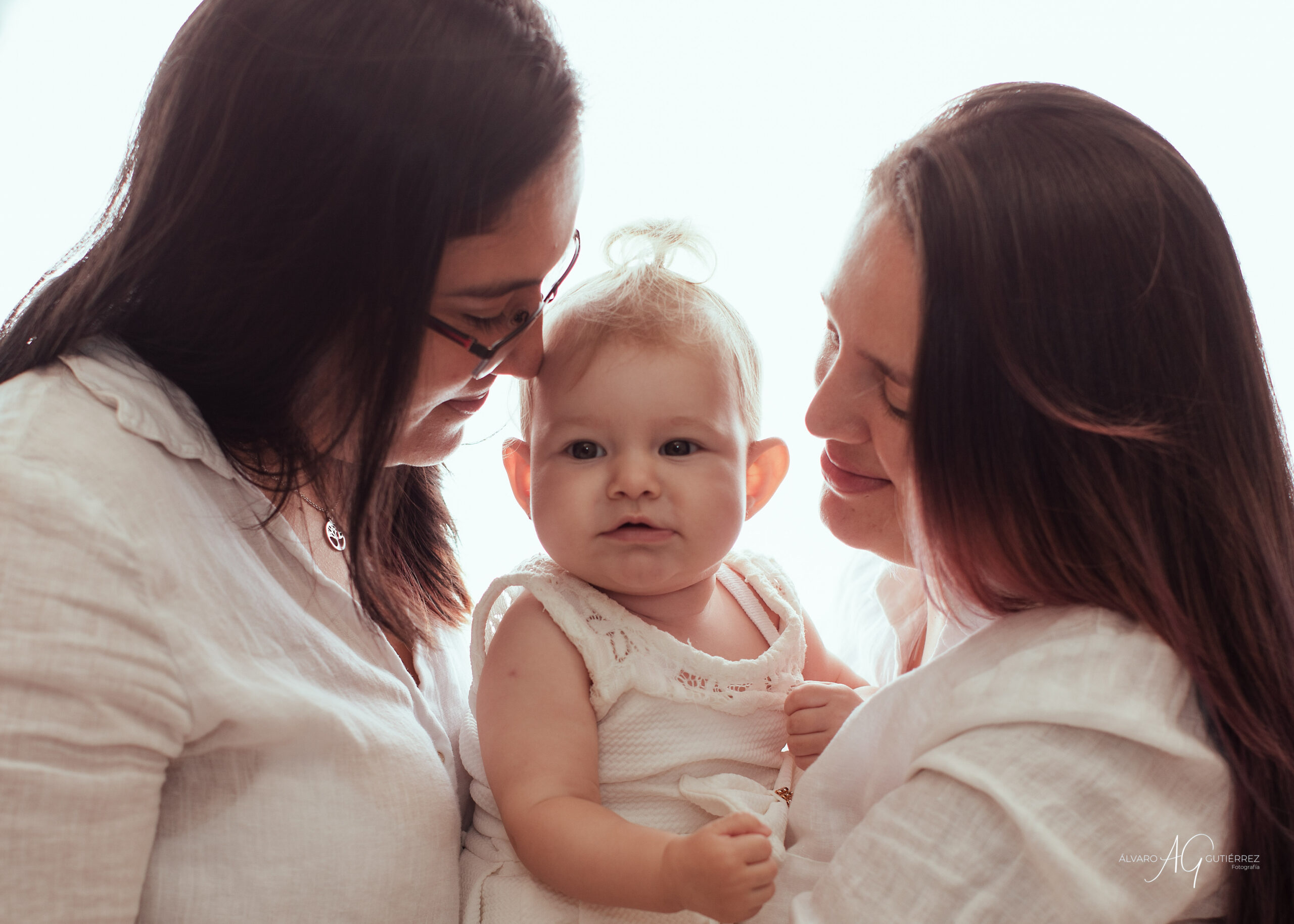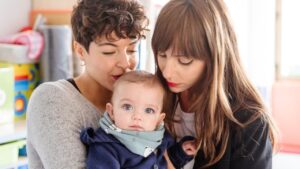Para las parejas de mujeres lesbianas que desean vivir la maternidad juntas, el Método ROPA (Recepción de Óvulos de la Pareja) ofrece una forma única y significativa de compartir el camino. A diferencia de la FIV tradicional o la donación de esperma, el Método ROPA permite que ambas integrantes tengan una conexión biológica y emocional con su bebé: una de ellas aporta el óvulo, mientras que la otra lleva adelante el embarazo. Esta técnica ha ganado popularidad dentro de la planificación familiar LGBTQ+, brindando un enfoque inclusivo en la medicina reproductiva.
En este artículo exploraremos cómo funciona el Método ROPA, sus beneficios, costos y qué esperar a lo largo del proceso.

¿Qué es el Método ROPA?
El Método ROPA es un tratamiento de fertilidad diseñado específicamente para parejas de mujeres lesbianas. Sigue un proceso similar a la FIV convencional, pero con una diferencia clave: una de las integrantes (la madre genética) se somete a estimulación ovárica y extracción de óvulos, mientras que la otra (la madre gestante) recibe el embrión y experimenta el embarazo.
¿Para quién está indicado?
- Parejas de mujeres lesbianas que desean compartir el proceso biológico de la maternidad.
- Parejas en las que una de las integrantes tiene mejor salud ovárica, mientras que la otra prefiere llevar el embarazo.
- Mujeres que, por alguna condición médica, no pueden cursar un embarazo.
El proceso del Método ROPA?
- Estimulación ovárica y extracción de óvulos: la madre genética recibe tratamiento hormonal para estimular la producción de óvulos, que luego son extraídos.
- Fertilización: los óvulos se fecundan en laboratorio con esperma de donante.
- Cultivo y selección embrionaria: se seleccionan los embriones más viables para la implantación.
- Transferencia embrionaria: el embrión se transfiere al útero de la madre gestante.
- Embarazo y control médico: si la implantación es exitosa, la madre gestante lleva el embarazo a término bajo supervisión médica regular.
Beneficios del Método ROPA
- Maternidad compartida: ambas participan de manera fundamental—una aporta el óvulo y la otra lleva al bebé en su vientre.
- Mayores tasas de éxito: gracias a las técnicas de FIV y la selección embrionaria.
- Conexión emocional: ambas se involucran profundamente en el proceso reproductivo.
- Reconocimiento legal: en muchos países el Método ROPA facilita la coparentalidad legal.
Consideraciones de costo
El costo del Método ROPA varía según el país y la clínica, pero generalmente incluye:
- Estimulación ovárica y extracción de óvulos (medicación hormonal y procedimientos).
- Costos de FIV y laboratorio (fertilización y cultivo embrionario).
- Transferencia embrionaria y controles posteriores (seguimiento médico y apoyo durante el embarazo).
- Donación de esperma (si aplica).
En comparación con la FIV tradicional, el ROPA puede implicar consideraciones médicas y legales adicionales que impactan en el costo total.
Tasa de éxito
El éxito del Método ROPA depende de factores como:
- Edad y calidad ovárica: las parejas más jóvenes con óvulos de mejor calidad suelen tener mayores probabilidades.
- Selección embrionaria: el uso de técnicas avanzadas mejora las tasas de implantación.
- Experiencia de la clínica: optar por un centro especializado aumenta las probabilidades de éxito.
Qué esperar durante el proceso
- Apoyo emocional: ambas integrantes participan activamente, lo que requiere comprensión mutua y acompañamiento psicológico.
- Aspectos legales: en algunos países se solicitan acuerdos legales de coparentalidad antes de iniciar el tratamiento.
- Controles de salud: evaluaciones de fertilidad y monitoreo regular para garantizar un embarazo seguro.
Conclusion
El Método ROPA brinda a las parejas de mujeres lesbianas una forma poderosa de compartir la experiencia de la maternidad, fortaleciendo sus vínculos biológicos y emocionales. Aunque implica consideraciones médicas, financieras y legales, se ha convertido en una opción cada vez más popular dentro de la planificación familiar LGBTQ+
Próximos pasos: Si estás considerando el Método ROPA junto a tu pareja, consulta con un especialista en fertilidad para evaluar tus opciones y diseñar un plan personalizado.
¿Necesitás asesoría? ¡Contactá con nuestra clínica para recibir acompañamiento experto en tu camino hacia la maternidad compartida!



